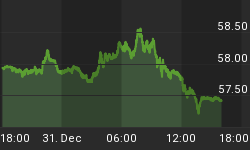This is the year the decennial, or 10-year, cycle falls and it always makes its presence known in varying degrees. The previous 10-year cycle bottom in 1994 witnessed a minor bear market in stocks and a minor recession in the economy, as did the previous one in 1984. The one before that in 1974 saw a much more severe contraction in stocks and the economy while gold rallied.
What is it that ultimately causes the 10-year cycle? The causes are complex and varied, and there is probably no way of knowing with absolute certainty the underlying causation. But one very conspicuous parallel can be drawn between the rate of change increase/decrease in the money supply (as governed by the Federal Reserve banks) and the overall vigor of the economy during major cycle bottoms. The 10-year cycle is no exception, and as previously pointed out in a recent commentary, there was a rather dramatic drop in the rate of change in the M3 money supply last year through the early part of 2004. Such declines in M3 aren't usually reflected in the economic numbers until much later -- sometimes by as much as nine months after the slowdown begins. We have now hit the "sour spot" of the M3 slowdown phase when last year's rate of change mini-crash in M3 is being felt.
Witness the excessive worry about the job market in the U.S. This is a major political/economic hot potato and it's only being exacerbated by the 10-year cycle coming down into the fall of this year. Conveniently, that's when the presidential election is scheduled for, and the lessons of recent history tell us that when a drop in M3 is accompanied by a dramatic spike in the price of oil the year or so before an election, there is always a change of administration in November. In other words, these factors ensure that the incumbent president is ousted, as certainly G.W. Bush is on his way towards being.
Another thing that typically happens during the year of the 10-year cycle bottom is a rise in interest rates. Not necessarily a dramatic one, but a noticeable one nonetheless. The fourth year of every decade (when the 10-year cycle bottoms) is most often used as a period of adjustment by the financial powers-that-be (read the Fed) to wring out imbalances that have developed during the preceding years of interest rate, dollar, and stock market intervention. This adjustment period is absolutely required to keep the overall financial system intact, just as a steam engine must have vent at regular intervals to prevent an explosion from the excess pressure that builds up over time. Every tenth year just happens to be one of those "steam valve" adjustment periods.
Most important to watch during a 10-year cycle bottom year is the dollar, especially as this latest 10-year cycle bottom happens to coincide with a presidential election. The dollar is of paramount importance during an election year, and with last year's dollar-driven across-the-board boom in stocks and commodities soaring to vertiginous heights, there will undoubtedly be some "correcting" of these excesses this year, and that will mean periodic rallies in the dollar. If my guess is correct, next year will be a continuation of 2003's sustained bull market in stocks, commodities, and gold -- not to mention at least some improvement in the general economy and employment situation -- and in order to ensure this return to better times, the dollar will have to be, shall we say, "adjusted" to some extent later this year. Then it's "off to the races" in 2005!
This year's 10-year cycle bottom likely won't be as severe as the one in 1974, but compared to last year's boom it will certainly be felt by most U.S. citizens. The rate of change slowdown in M3 last year is already making its presence known and probably will continue to until the election this November. It will certainly be interesting to see how it unfolds along the way, although it won't always be a pleasant ride.
















